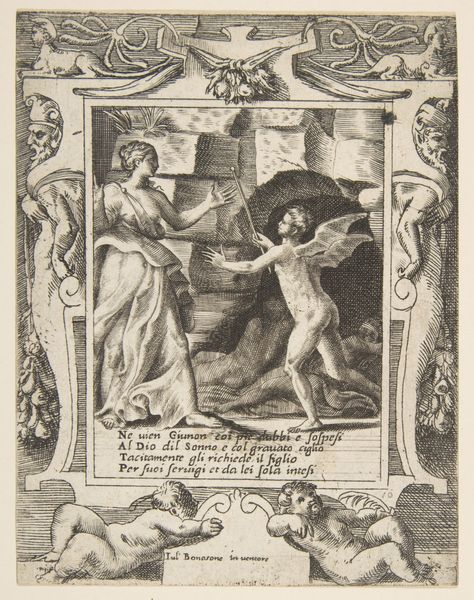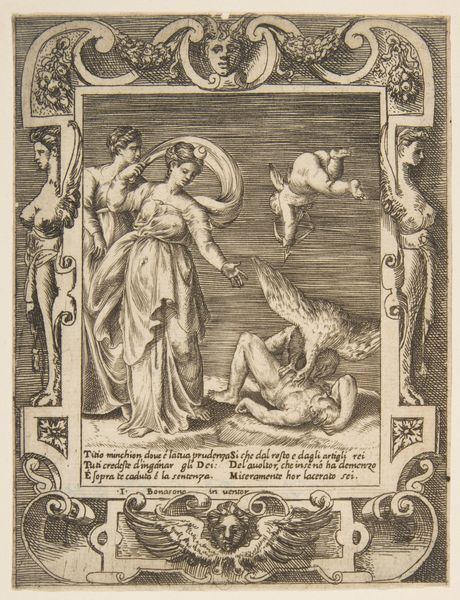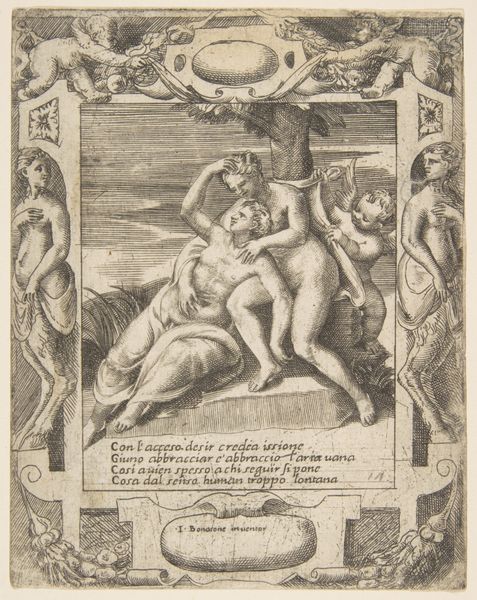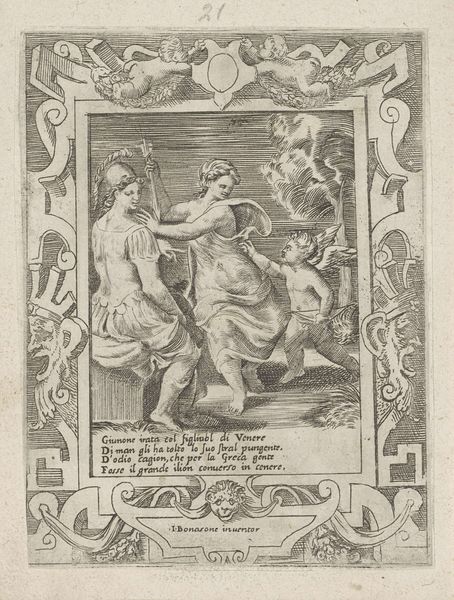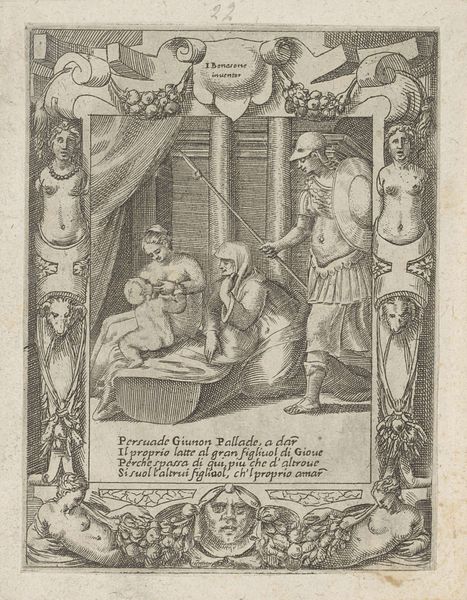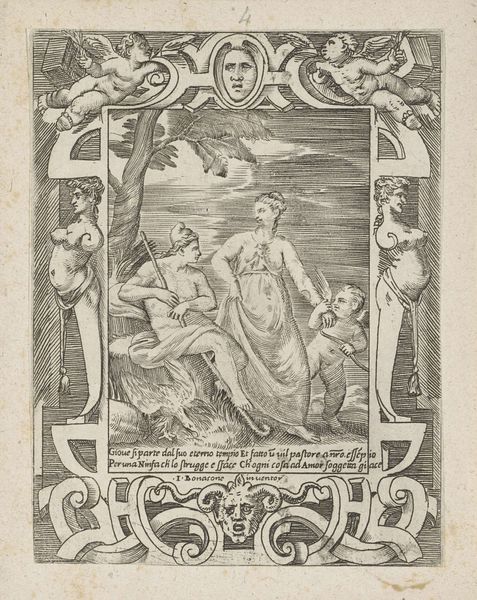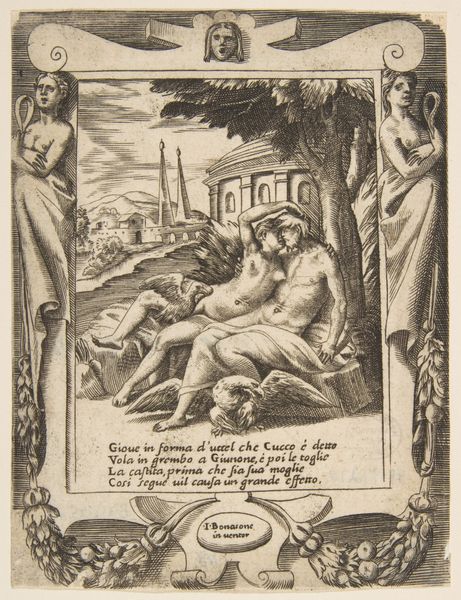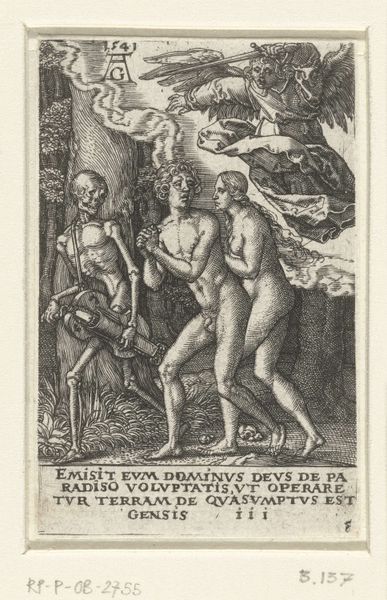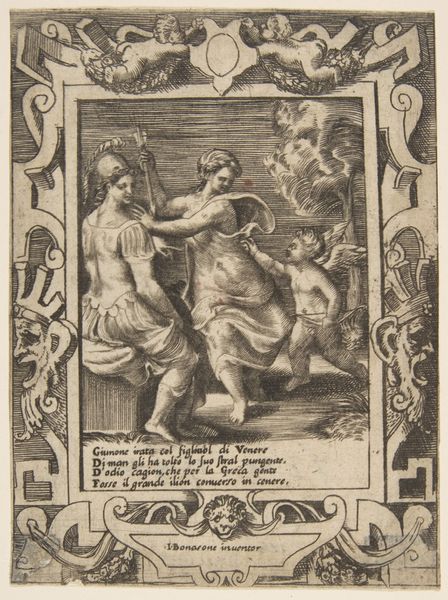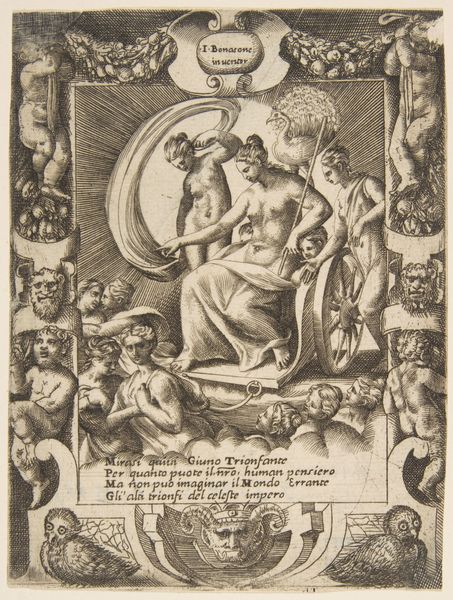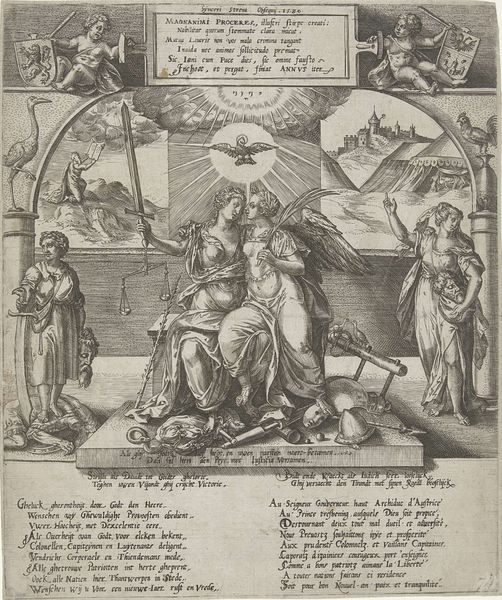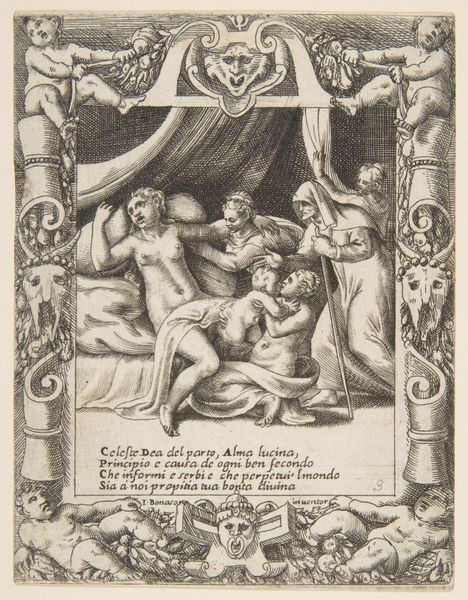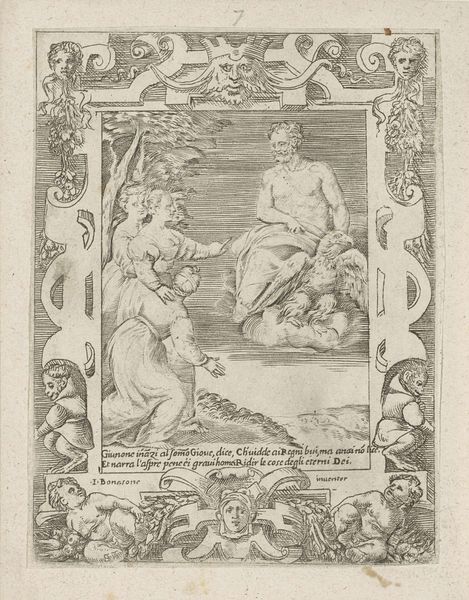
print, engraving
#
allegory
# print
#
pen sketch
#
old engraving style
#
mannerism
#
figuration
#
form
#
line
#
history-painting
#
italian-renaissance
#
nude
#
engraving
Dimensions: height 134 mm, width 102 mm
Copyright: Rijks Museum: Open Domain
Curator: Let’s take a look at "Juno beveelt Slaap op Jupiter neer te dalen" by Giulio Bonasone, an Italian printmaker. The Rijksmuseum holds this particular engraving which dates from around 1501 to 1580, placing it squarely in the Italian Renaissance. Editor: My initial reaction is how theatrical this is! It's a small piece, yet feels quite grand in its design. The figures are dynamic, almost frozen mid-gesture, like actors on a stage. There is clearly a narrative. Curator: Indeed. The title translates to "Juno Orders Sleep to Descend on Jupiter," referencing a moment from classical mythology. Juno, wife of Jupiter, is plotting against him, and she seeks the aid of Sleep, represented as a winged figure, to lull Jupiter into slumber. Juno wants the power and the glory to reign over the god of gods. Editor: That’s visible in the frame as well! Notice how even the border of the engraving becomes part of the storytelling. The figures feel less important than the allegory they represent. Speaking of material – do we know if Bonasone created his own printing plates or if he hired it out? Curator: Art historical accounts attribute him with working on the creation and etching of his own printing plates. You bring up an important point though. I can see why, from a materialist point of view, the relationship between labor and authorship might be especially complex in printmaking. In these workshops, collaborations were normal and accepted. The dissemination of the message held primary importance! Editor: That makes me question if Bonasone also chose to focus on mythological themes to highlight not only religious beliefs, but also ideas around authority, and, of course, the distribution of propaganda and philosophy. How far do we want to push that line of thinking? Curator: A fair point. Symbols and historical accounts take time to grow roots and continue to permeate throughout society. This historical approach allows one to question accepted concepts of power through symbolic analysis and critical interpretation. Editor: Well, looking at the social contexts that shaped its creation is pretty helpful. All of it helps us to look and question art’s function both then and now! Curator: I agree. Thinking about its potential meaning within that historical context enriches the image tremendously for me. It certainly brings new life to Bonasone's world.
Comments
No comments
Be the first to comment and join the conversation on the ultimate creative platform.
